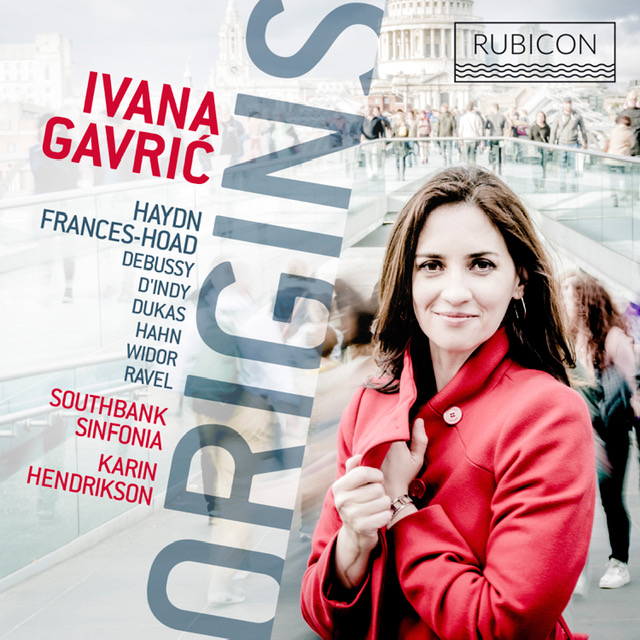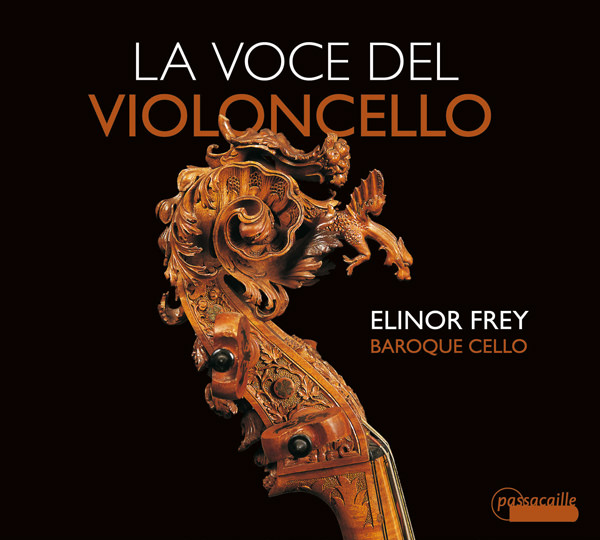 *On the CD Origins, pianist Ivana Gavric inhabits Haydn’s Piano Concerto No, 11 in D as familiar turf of his spirit, as if pianist and composer share not only one joie de vivre, but one joie d’être as well. We sense a clarity of being immediately in the spirited confidence of her entry, and one soon feels good to be alive. Once, at Haydn’s house in Vienna, a man from New England, with taxi waiting outside, rushed past me and about the room of displays for “just a few more minutes with Haydn” – and over time I’ve come to understand why Haydn is often greeted with profound affection. We all have many mysteries of life to learn from Haydn’s guileless and playful heart. Take the CD at hand which also contains “homages to Haydn” by Debussy, d’Indy, Dukas, Hahn, Ravel, Widor – and Hoad. Included too is Hoad’s systematic but existentially-contained epic Between the Skies, the River, and the Hills, a composition with an enticing knack for the impending unknown, Gavric, always a subtly-voiced yet emotionally-precise pianist, performs this with Southbank Sinfonia.
*On the CD Origins, pianist Ivana Gavric inhabits Haydn’s Piano Concerto No, 11 in D as familiar turf of his spirit, as if pianist and composer share not only one joie de vivre, but one joie d’être as well. We sense a clarity of being immediately in the spirited confidence of her entry, and one soon feels good to be alive. Once, at Haydn’s house in Vienna, a man from New England, with taxi waiting outside, rushed past me and about the room of displays for “just a few more minutes with Haydn” – and over time I’ve come to understand why Haydn is often greeted with profound affection. We all have many mysteries of life to learn from Haydn’s guileless and playful heart. Take the CD at hand which also contains “homages to Haydn” by Debussy, d’Indy, Dukas, Hahn, Ravel, Widor – and Hoad. Included too is Hoad’s systematic but existentially-contained epic Between the Skies, the River, and the Hills, a composition with an enticing knack for the impending unknown, Gavric, always a subtly-voiced yet emotionally-precise pianist, performs this with Southbank Sinfonia.

*On La Voce del Violoncello, we have Elinor Frey on baroque cello – with Esteban La Rotta on theorbo and baroque guitar and Susie Napper also on baroque cello. Always pensive but with an assertive intention to explore gripping the atmosphere she creates about her, Frey probes the colorful and image-conjuring potential of both the inner and outer worlds of these “Solo Works of the First Italian Cellist Composers.” For me, at least, Frey draws one’s imagination down streets populated by people of seventeenth/eighteenth century Italy, and it’s delightful to imagine here the lives of day-to-day humans with their laughter, inner thoughts, and the sweat of living on their skin.

* Recordings of Schubert’s “Death and the Maiden” quartet, by the Talich and Busch quartets, long ago permeated my consciousness and helped to shape my personal Schubertian world. Add now to the mix a thrilling recording of much technical sophistication by the Pavel Haas Quartet of both the “Maiden” and the D956 Quintet. These are outstanding performances of metaphysical propulsion, uncannily integrated ensemble playing, and meticulously-realized yet subtle drama. I have been more accustomed to rougher edges in performances of the quartet and now I happily recommend the madness in finesse of the Pavel Haas Quartet in the “Maiden” and their elegantly textured and painfully touching narrative in the Quintet

* Many years ago, I got to tell lutenist Julian Bream, after his recital at Wigmore Hall, that his recording The Golden Age of English Lute Music had been a treasured and intimate companion of mine since it first appeared in the early sixties – then I thanked him two or three hundred times! And certainly, this recording has consumed my spirit and my thinking each time it began with Robert Johnson’s Two Almaines and took my imagination to unanticipated mysteries of the world offered, sometimes wistfully, by Dowland, Byrd, and company. I always feel at home in the music of this recording, though I doubt I would as secure in the threatening era in which the music was born. If I were to be buried in a pyramid, I would certainly take this CD along as an eternal everpresence to which I already feel eternally bound!

*It’s a special and too rare thrill to hear a composer recorded, whatever the music, and to know that a creative mind whose compositions we’ve often enjoyed is inevitably doing its thing before one’s very ears in the service of performance. Take this 3 CD set titled Beethoven Spring & Kreutzer Sonatas in which the seven violin-piano pairings include Kreisler/Rupp (1936) and Milstein/Balsam (1950) on the Spring Sonata and Kulenkampff/Kempff) (1935) and Busch Serkin (1941) on the Kreutzer. And at this very moment I’m listening to Szigeti/Bartok (1940) on the Kreutzer in an interpretation that often surprises in changes of tempo, emphasis, distinct personality, and dynamics. This is altogether delicious stuff and I can’t help but recall once working on my book on crafts while playing – over and over -the Emerson’s set of Bartok quartets, fueled, especially, by the fifth quartet to keep going without rest. In this Kreutzer, I hear a human heart and an always searching mind which I’ll take back to listens of Bartok’s own compositions.

*I once visited the Brahms Museum in Murzzuschlag, Austria where, besides investigating the rooms and fascinating contents therein, I did two things: I played a middle C on Brahms’ own piano and purchased a two CD set of the composer’s music titled Brahms: Jorg Demus (In Memoriam Claudio Arrau). Demus here indicates a naturally confidant and full-bodied – though not excessively so -presence, even in lyrical passages, rather than musical hues of reflective and perhaps wounded vulnerability. The playing has the quality of, perhaps, full-lunged singing atop the mountains not far away. Or is it the quality of the ringing of cathedral bells? It was in this summer residence that Brahms worked on his 4th symphony and almost lost it to a fire. I wrote a travel piece – for the Spectator or the Globe – and remember ending it, while looking through the train windows on the route back to Vienna, with something like, “A composer is lucky if he sees these mountains and writes music that is worthy of them.”
